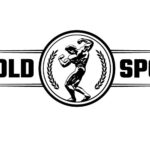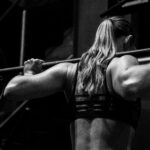Introduction
Olympic weightlifting is a sport that blends strength, precision, and mental focus. It involves two primary lifts: the snatch and the clean and jerk. This article will explore these techniques, training tips, nutrition, and the top athletes to watch in the field.
Understanding Olympic Weightlifting
Olympic weightlifting is distinct from other forms of weightlifting such as powerlifting or bodybuilding. It focuses on two main lifts:
- The Snatch: A single, continuous movement where the barbell is lifted from the ground to overhead in one motion.
- The Clean and Jerk: A two-part lift where the barbell is first brought to the shoulders (clean) and then pressed overhead (jerk).
Both lifts require a combination of explosive power, technique, and coordination.
The Snatch
The snatch is one of the most technical lifts in Olympic weightlifting. Here’s a breakdown of its components:
- Setup: Start with feet shoulder-width apart and the barbell close to the shins. Grip the bar with a wide grip.
- Lift Off: Begin by lifting the barbell slowly from the ground, keeping your back straight and the bar close to your body.
- Pull: As the barbell passes the knees, accelerate by explosively extending your hips, knees, and ankles (triple extension).
- Catch: Drop into a squat position while simultaneously extending your arms overhead to catch the bar.
- Stand Up: Rise from the squat position with the bar locked out overhead.
Common mistakes include using the arms too early instead of the hips, not keeping the barbell close to the body, and losing balance during the catch phase.
The Clean and Jerk
The clean and jerk is a two-phase lift that requires precision and strength. Here’s a detailed explanation:
- Setup: Feet shoulder-width apart, grip the barbell with a slightly wider than shoulder-width grip.
- Clean: Lift the barbell from the ground, keeping it close to your body. After the bar passes your knees, explosively extend your hips and knees. Drop into a squat and catch the barbell on your shoulders, then stand up.
- Jerk: Dip slightly by bending your knees, then extend them to push the barbell upwards. As the barbell rises, split your legs into a lunge position to catch the bar overhead. Fully extend your arms and bring your feet back in line to complete the lift.
Common mistakes include not achieving full hip extension in the clean, inadequate dip or drive in the jerk, and improper foot placement in the lunge position.
Training for Olympic Weightlifting
Training for Olympic weightlifting involves a combination of strength training, technique work, and conditioning. Focus on compound movements like squats, deadlifts, and presses to build overall strength. Incorporate accessory exercises to target specific muscle groups and perform dynamic stretches and mobility drills to improve range of motion. Follow a structured program that includes periodization to progressively overload and peak at the right times, balancing heavy lifting days with lighter, technique-focused sessions.
Key Muscles Involved
Understanding the key muscles involved in Olympic weightlifting can help you focus your training and improve your performance:
- Primary Muscle Groups: Legs (quadriceps, hamstrings, glutes), back (lower and upper back muscles, including the erector spinae, traps, and lats), shoulders and arms (deltoids, biceps, triceps).
- Supporting Muscles: Core muscles (abdominals, obliques) for stability and power transfer, forearms, and grip for holding the barbell securely.
Equipment and Gear
Having the right equipment and gear is essential for safe and effective training:
- Essential Equipment: Use a high-quality Olympic barbell and bumper plates designed for weightlifting, and a sturdy platform for lifting.
- Footwear: Weightlifting shoes with a raised heel and firm sole improve stability and help achieve better lifting positions.
- Lifting Belts: A weightlifting belt supports the lower back and helps maintain proper form, especially during heavy lifts.
Competitions and Rules
Understanding the structure and rules of Olympic weightlifting competitions is essential for both athletes and enthusiasts:
- Structure of Competitions: Competitions are typically divided into weight classes and gender categories. Each lifter gets three attempts at each lift (snatch and clean and jerk). The best successful lift in each discipline is combined to determine the total score.
- Key Rules and Regulations: Lifters must follow specific commands from the referee for each lift. Lifts must be performed in a controlled manner, and the bar must not touch the platform before being fully lifted. Any rule infractions, such as dropping the barbell before the command or failing to fully extend the arms, result in a no-lift.
- Weight Classes and Scoring System: Weight classes are defined by the International Weightlifting Federation (IWF) and vary for men and women. Scoring is based on the highest successful lift in each discipline, with the total of the best snatch and clean and jerk determining the winner.
Famous Olympic Weightlifters
Olympic weightlifting has seen many legendary athletes who have made significant contributions to the sport:
- Naim Süleymanoğlu: Known as “Pocket Hercules,” this Turkish weightlifter won three Olympic gold medals and set numerous world records.
- Pyrros Dimas: A Greek weightlifter with three Olympic gold medals and one bronze, Dimas is considered one of the greatest in the sport.
- Liao Hui: A Chinese weightlifter who has broken multiple world records and won several world championships.
Athletes to Watch in Upcoming Competitions
Keep an eye on these top contenders who are set to make waves in the world of Olympic weightlifting:
- Shi Zhiyong: A dominant Chinese weightlifter in the 73 kg category, known for his powerful lifts and multiple world records.
- Lasha Talakhadze: A Georgian heavyweight who consistently breaks his own world records and dominates the super-heavyweight category.
- Katherine Nye: An American weightlifter and world champion in the 71 kg category, poised for more success on the international stage.



